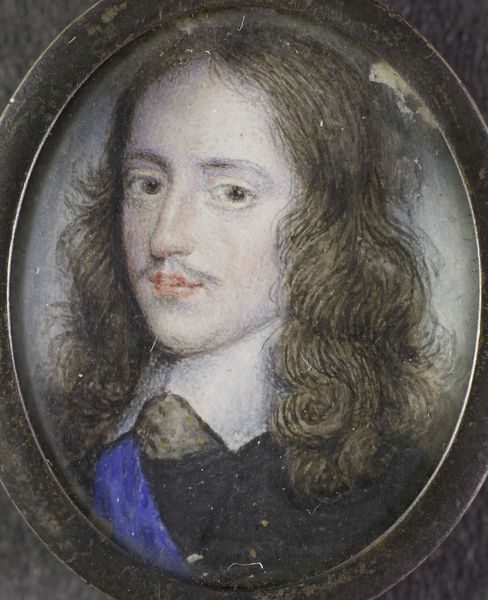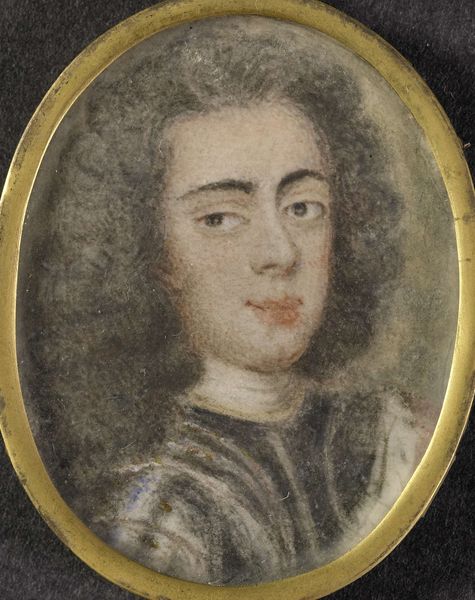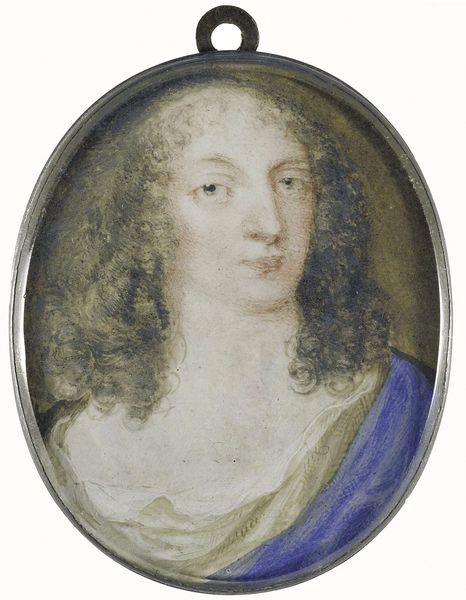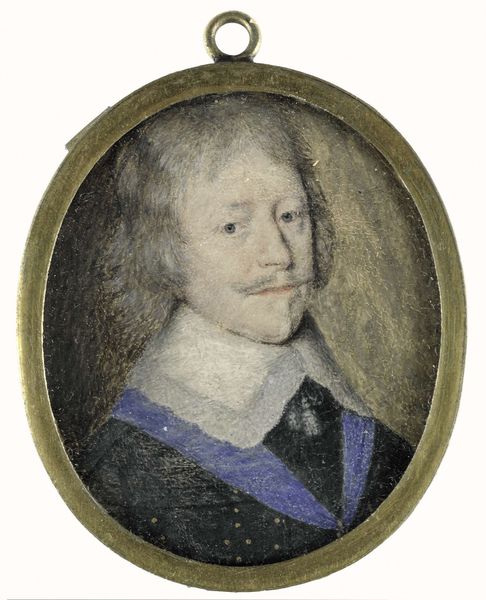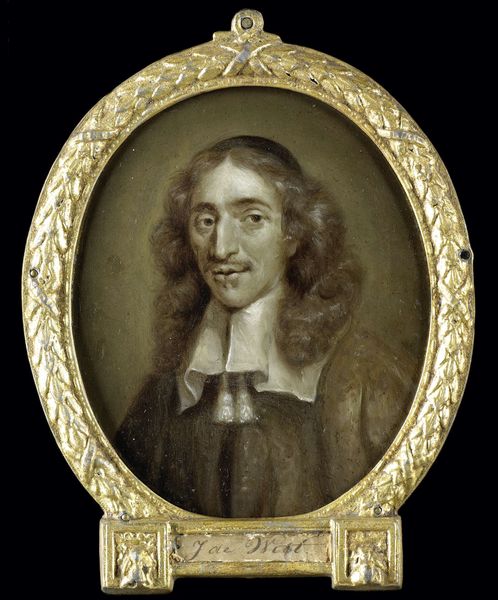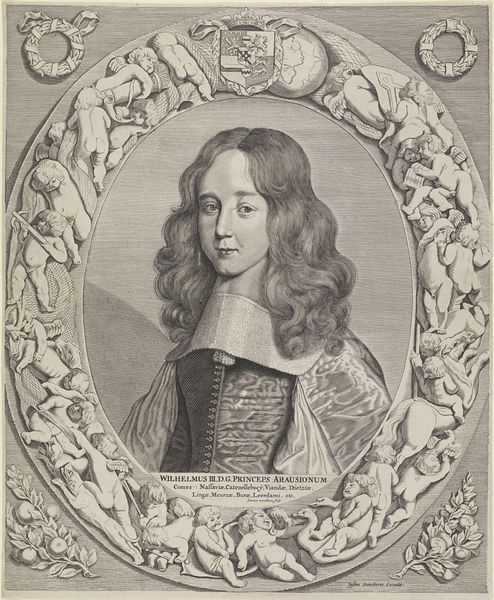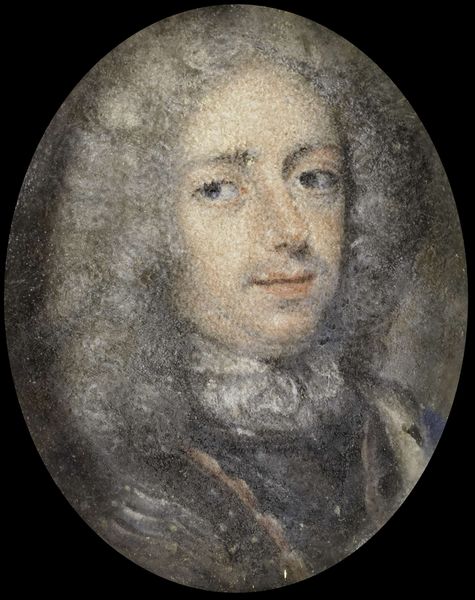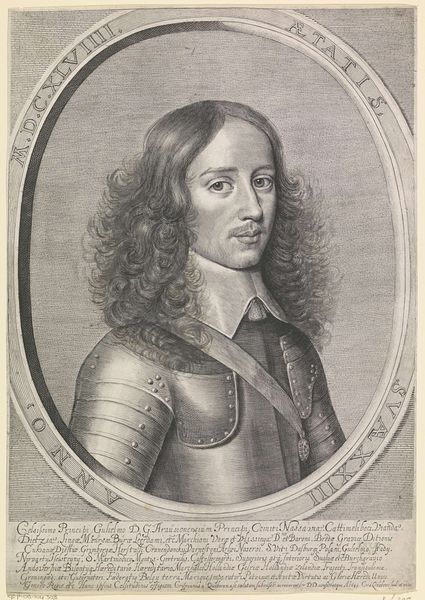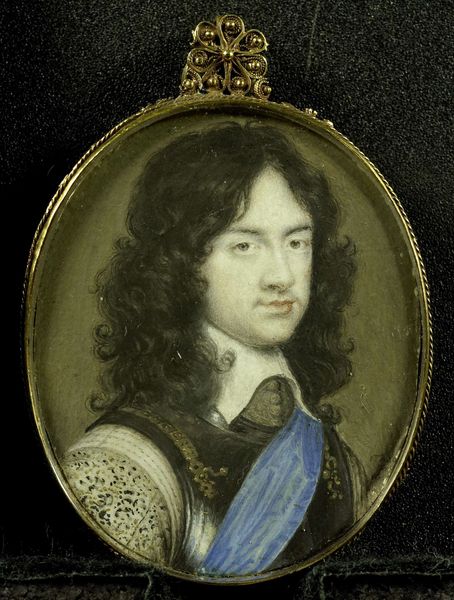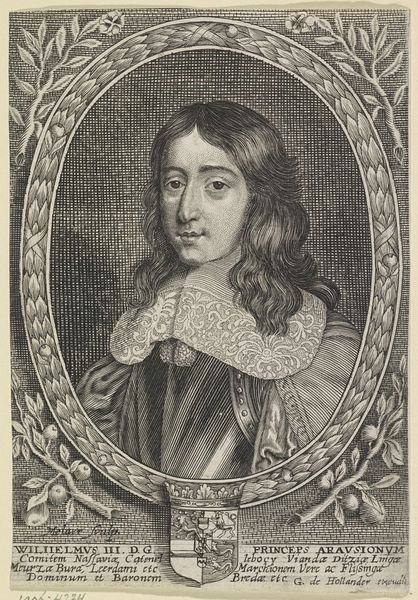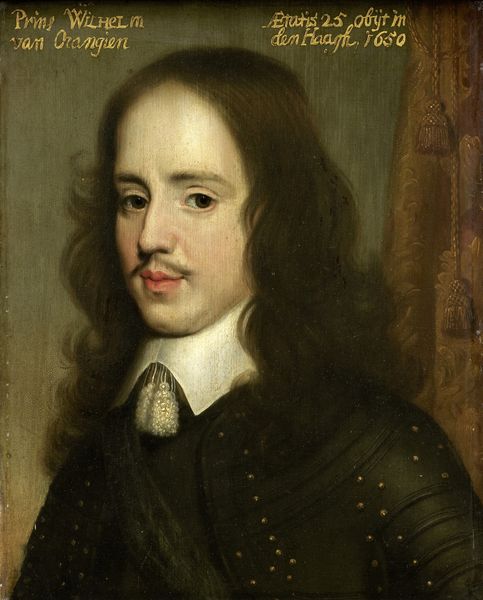
painting, oil-paint
#
portrait
#
baroque
#
painting
#
oil-paint
#
portrait reference
#
portrait head and shoulder
#
framed image
#
academic-art
#
miniature
#
fine art portrait
Dimensions: height 4.6 cm, width 4.1 cm, height 5.6 cm, width 4.3 cm, depth 0.4 cm
Copyright: Rijks Museum: Open Domain
Curator: What a delicate miniature! The identity of the artist of this oil-on-panel portrayal of Willem II, Prince of Orange, remains a mystery to us. Experts date this small treasure to sometime between 1647 and 1650. Editor: He appears melancholy, doesn’t he? His gaze is direct, yet there’s a wistful quality to it. Even the muted color palette contributes to that sense of quiet sorrow. Curator: I agree. It's interesting to consider how miniatures functioned. They were often deeply personal objects. One would have carried such an image to keep the subject "present," almost talismanic. This portrait, like many of its era, likely operated on both a personal and a political level. Editor: How so? Beyond simple visual memory, what specific meanings might his image hold? Curator: Well, consider Willem II’s position. He was a Prince of Orange, a figurehead within the Dutch Republic's complex political structure. The symbols of office might seem diminished in such a reduced format. Instead, emphasis is placed on his personal bearing. However, such images would have been presented or given to members of his court, so while intimate in size they had social consequences. Editor: He also only briefly held that position. A memento like this makes one think of legacy. I imagine those who cherished such likenesses actively chose to memorialize his image and politics beyond his brief leadership. Curator: Precisely! This miniaturized presentation removes some of the overt power dynamics, but then reinvests with personal sentiment—suggesting the continuity and survival of the Orange lineage despite its complexities. Even his melancholy expression seems almost prescient considering his relatively young death at 24! Editor: I hadn't thought of that. Viewing this portrait in isolation, his almost theatrical appearance might seem like simple affectation. Learning of his short life now casts a different light; it suggests that such images helped bolster political will among his contemporaries and can offer audiences an avenue for accessing his role in history centuries later. It makes me see the picture in a new way. Curator: I find it wonderful to trace the enduring appeal of images throughout social history, especially within such delicate artworks!
Comments
No comments
Be the first to comment and join the conversation on the ultimate creative platform.
